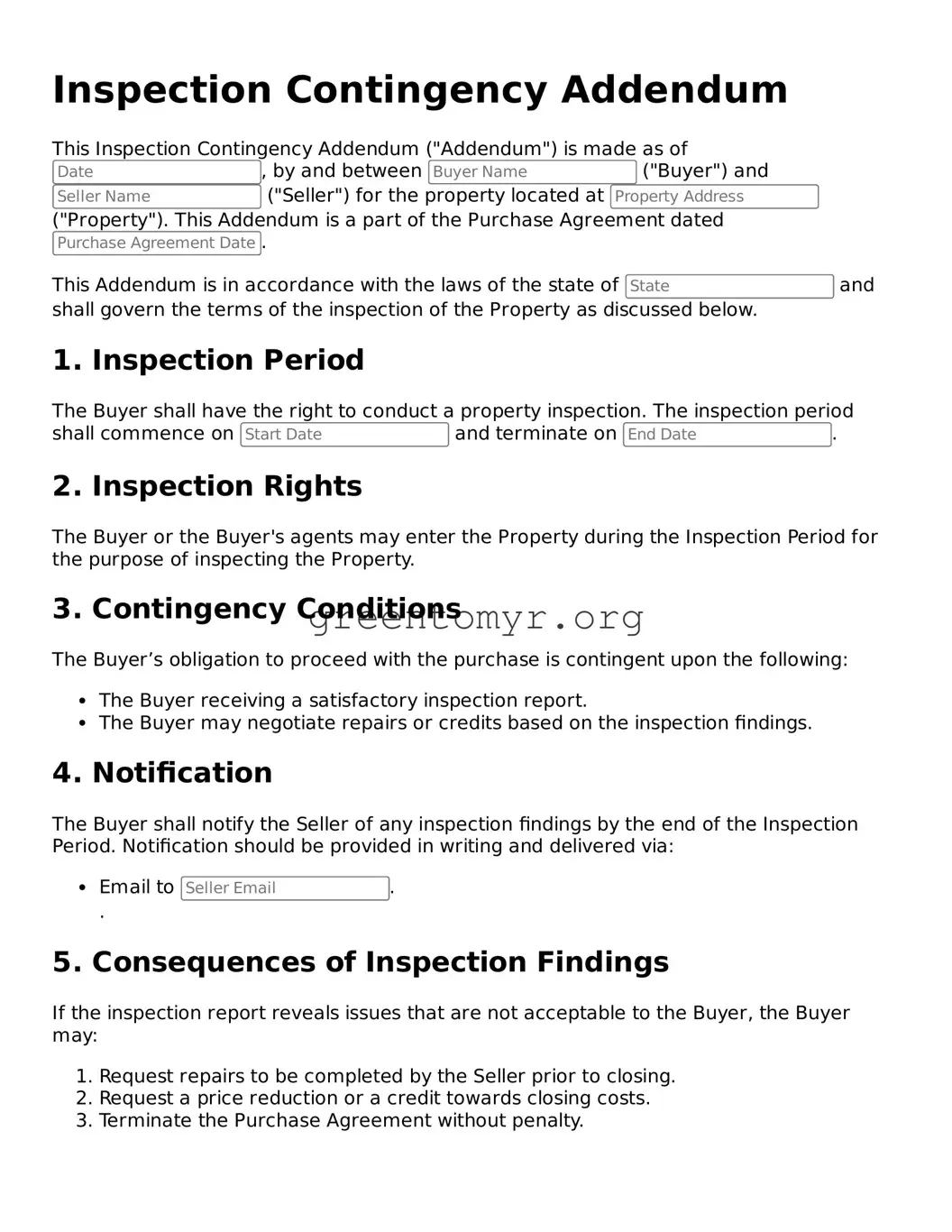Valid Inspection Contingency Addendum Form
The Inspection Contingency Addendum is a crucial document used in real estate transactions that allows buyers to have a property inspected before finalizing their purchase. This form establishes the buyer's right to request repairs or renegotiate terms based on the findings uncovered during the inspection process. Understanding this addendum can empower you as a buyer, ensuring you make informed decisions—take the next step by filling out the form below!
